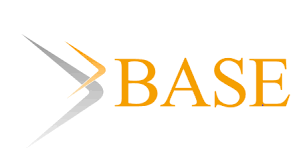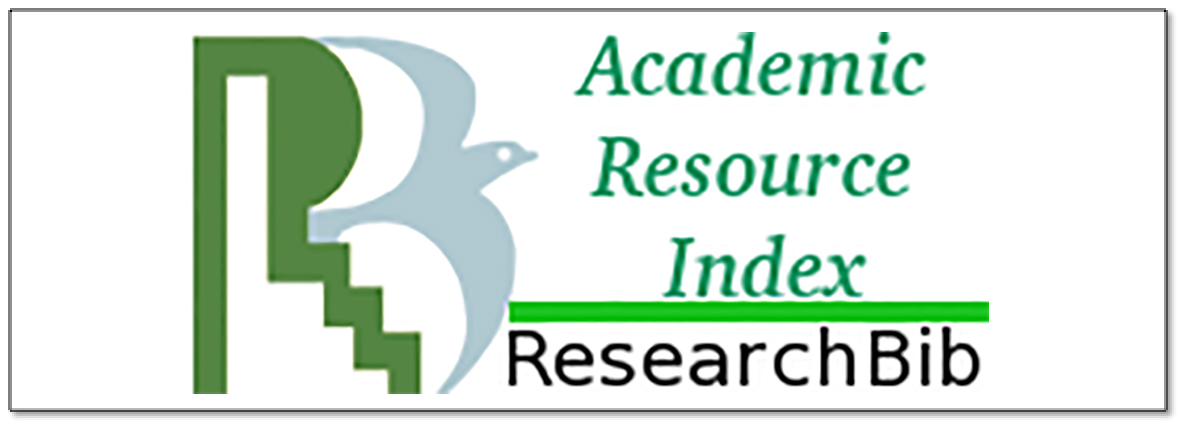Comparison of Wear Behaviour of Commercial Tire and Bearing Pad Rubber under Dry Sliding Condition
Abstract
The consequence of load and sliding distance on the performance tribology of commercially used tire and bearing pad rubber was evaluated using a pin-on-disc method. The test was carried out under ambient dry sliding conditions with load of 2.5N, at sliding velocity of 0.369 ms-1 and with varying sliding distance ranging from 110m-2650m. The results showed that the sliding distance at the fixed load affects the wear rate of the rubbers and the weight loss increased with increasing the distance for both the rubbers. Wear rate also increases almost linearly to a maximum then attain a plateau with increasing sliding distance. The tire rubber showed the higher wear and coefficient of friction due to presence of natural rubber. The worn surface was characterized by optical microscope and SEM. The results show surface with shallow grooves width and depth increased as the distance increases. Oxidative wear was found to be the predominant mechanisms in the dry sliding.
References
[2] Arayapranee W, Rempel GL, (2013) Effects of polarity on the filler-rubber interaction and properties of silica filled grafted natural rubber composites. Journal of Polymers 2013: 1-9.
[3] Man SHC, Hashim AS, Akil HM (2008) Studies on the curing behaviour and mechanical properties of styrene/methyl methacrylate grafted deproteinized natural rubber latex. Journal of Polymer Research 15(5): 357-364.
[4] Dick J.S (1987) compounding materials for the polymer industries, Noyes, Park Ridge, USA.
[5] Chuayjuljit S, Imvittaya A, Na-Ranong N, Potiyaraj P (2002) Effects of particle size and amount of carbon black and calcium carbonate on curing characteristics and dynamic mechanical properties of natural rubber. Journal of Metals, Materials and Minerals, 12(1): 51-57.
[6] Kumar RG, Rajesh R (2016) A study on the abrasion resistance, compressive strength and hardness of banana– fibre reinforced natural rubber composites. International Journal of Advanced Research in Engineering and Technology 7(3): 42-55.
[7] Morton M, (1987) Rubber Technology, 3rd edition, Van Nstrand Reinhold, New York.
[8] Chung B, Funt J.M, Ouyang GB (1991) Effects of carbon black on elastomer ultimate properties – IR compounds. Rubber World, 204: 46-51.
[9] Wang MJ (1998) Effect of polymer-filler and filler-filler interactions on dynamic properties of filled vulcanizates. Rubber Chemistry and Technology 71: 520-589.
[10] Sloan JM (1992). Reversion studies of natural and guayule rubbers, US Army Materials Technology Laboratory, Polymer Research Branch, August 1–9.
[11] Haddeman R, Panenka R (1997) Organosilanes and silicas in natural rubber. Natural Rubber December, 3.
[12] P.A. Ciullo, Industrial Minerals and Their Uses, 1st Edition, R.T. Vanderbilt Company, CT, USA, 1996.
[13] Abeer AA, (2016) Study the effect of mica as filler in natural rubber properties. Journal of Babylon University Engineering Sciences. 3(24): 11-20.
[14] Brentin R, Sarnacke P, (2011) Rubber compounds a market opportunity study. Omni Tech International Ltd., Midland, USA.
[15] Myshkin NK, Petrokovets MI., Kovalev AV. (2005) Tribology of polymers: Adhesion, friction, wear and mass-transfer, Tribology International. 38: 910-921.
[16] Bhowmick AK, Stephens HL (2001) Handbook of Elastomers, 2nd edition, Marcel Dekker Inc. New York, USA.
[17] Carothers WH, Coffman DD (1932) Homologs of chloroprene and their polymers. Journal of the American Chemical Society 54: 4071-4076.
[18] Mukhopadhyay A (2013) SEM/EDAX studies of pattern abrasion of “EPDM” rubber surfaces under selected parametric combinations of two-body abrasion in controlled laboratory conditions. Journal of Materials Science and Engineering A 3(1): 31-40.
[19] Franek F, Badisch E, Kirchgabner M (2009) Advanced methods for characterisation of abrasion/erosion resistance of wear protection materials. FME Transactions 37: 61-70.
[20] Baker C (1997) Natural rubber – history and developments in the natural rubber industry. Mater. World 5(1): 14-15.
[21] Ilangovan S (2014) Effect of solidification time on mechanical properties and wear behavior of sand cast aluminium alloy. International Journal of Research in Engineering and Technology 3(2): 71-75.
[22] Tu JP, Yang YZ., Wang LY, Ma XC, Zhang XB (2001) Tribological properties of carbon-nanotube-reinforced copper composites, Tribology Letters, 10(4): 225-228.
[23] Venkateswarlu K, Pathak LC, Ray AK, Das G, Verma P.K, Kumar M, Ghosh RN (2004) Microstructure, tensile strength and wear behaviour of Al–Sc alloy. Materials Science and Engineering A 383(2): 374-380.
[24] Nuruzzaman DM, Chowdhury MA, Rahaman ML (2001) Effect of Duration of Rubbing and Normal Load on Friction Coefficient for Polymer and Composite Materials. Industrial Lubrication and Tribology, 63: 320-326.
[25] Deuis RL, Subramonian C, Yellup JM (2012) Reviews on the influences of alloying elements on the microstructure and mechanical properties of aluminum alloys and aluminum alloy composites. International Journal of Scientific and Research Publications. 2(6): 1-7.
[26] Kaiser MS, Dutta S (2014) Wear behavior of commercial aluminium engine block and piston under dry sliding condition. International Journal of Chemical, Molecular, Nuclear, Materials and Metallurgical Engineering. 8(8): 860-865.
[27] Sakdapipanich JT, Rojruthai P (2012) Biotechnology-Molecular studies and novel applications for improved quality of human life, InTech, European Union.
[28] Chot K, Yang JH, Park C.E (1997) The effect of interfacial adhesion on toughening behaviour of rubber modified poly (methyl methacrylate). Polymer 38(20): 5161-5167.


























1.gif)
